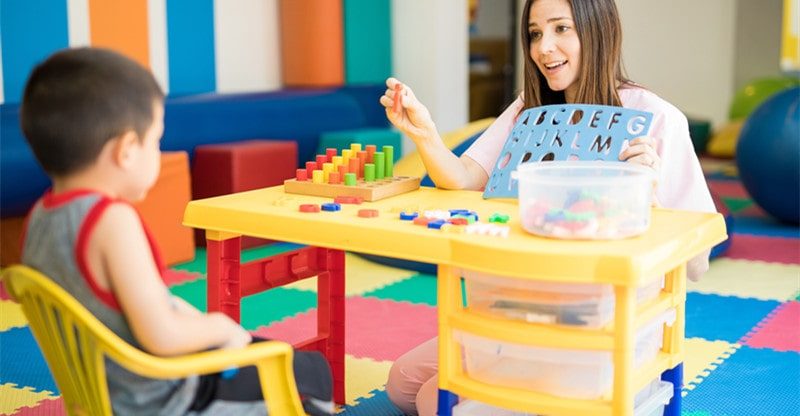How Gamification Helps Special Needs Children
You might have heard the term “special needs” at some point. Maybe you have a special needs child. Special needs is a pretty broad catch-all term. It simply means a pupil needs special attention, and they may need to learn differently than some other students.
If you have a special needs child, and you find they can’t keep up with the class if you send them to a traditional school, you might wonder how they can catch up. You might schedule sessions with a tutor. That tutor might use different techniques to try and address your child’s issues. For instance, they might utilize lesson gamification.
We will talk about gamification and special needs students right now. Often, this technique can help these kids get back on track and keep up with the class as it moves on to new topics.
How Many Kids Have Special Needs?
If you have a child with special needs, you can feel alone sometimes. Maybe you experience frustration because you know your child tries hard at school, but they can’t seem to focus.
As it turns out, you’re not alone. In fact, 15% of public-school kids have special needs. This stat covers age three all the way up to age twenty-one.
If you go online and look at message boards and on certain websites, you can often find parents with special needs kids who might suggest various techniques, tutors, and schools to you. You might decide to hire a tutor who can help your child through remote lessons in the afternoons or on the weekends. They might very well suggest gamification as a way to catch your child up with the rest of their peers.
What is Gamification?
Gamification involves creating games that teach subjects like math, history, science, language skills, and so forth. A teacher might gamify a lesson plan with a board game, a card game, or even with video games. Several companies make these games now, and a student can learn with them on their phone, laptop, desktop, or tablet.
A teacher or tutor who might gamify a subject can invent that game on their own, or they might use an existing game that a company makes. Many business entities make these games now since they know gamifying schoolwork is a more accepted technique than ever before.
How Does Gamifying Help Your Child?
Let’s say your child has an ADHD diagnosis or they’re on the autism spectrum. You might notice that they can’t keep up with the class, or they fail tests when they need to show they’ve retained information.
You can set up a tutor for your child, and that tutor might gamify the lesson plan. Before they do that, they can interact with your child and learn their abilities. They will likely notice weaknesses and strengths. They will note the pupil’s attention span as well.
Then, the tutor or teacher can figure out which games your child might play that can help them retain the information they need. Gamification can help kids with dyslexia, for instance.
Games already exist that the creators tested to make sure kids with this condition responded well to them. All the tutor or teacher must do is show the pupil how to play and then steer them gently back on track if anything distracts them.
Focus and Attention
Many times, educators who try to teach kids on the autism spectrum, kids with an ADHD diagnosis, and others, report those children can’t seem to pay attention as well as the rest of the class. Other students might respond to a traditional lesson plan, but the special needs children do not.
That’s not the children’s fault. They have differently-wired brains. Once a teacher gamifies a lesson, though, the children often experience a remarkable turnaround.
They can focus on the study material because an educator presents it in game form, which stimulates different brain sections. The child will want to learn about the material so they can ascend to higher levels that the game provides. The pupil will often retain that information without necessarily realizing they’re learning.
Gamifying Instills Confidence
Some previous lesson plans failed to take a child’s feelings into account. A special needs child might feel discouraged if they see those around them learning using a lesson plan this individual child can’t follow as well. They might feel left behind, and they’ll have a tough time getting into a mental space where they can ever catch up.
Gamifying lets them do that. By presenting the material using a completely new format, this child can feel energized and invigorated. They can feel ready to learn and grow during their downtime. When they catch up with the rest of the class, they’ll feel proud of their accomplishments.
Some educators feel this mindset matters nearly as much as actually learning the lessons. Someone who feels confident can better tackle obstacles the world puts in front of them. We all encounter those challenges, but someone who knows they have what it takes to learn new skill sets should do better than someone who feels unequipped.
Gamifying can help kids who might otherwise fall through educational system cracks. More times than not, these children want to learn, and they can achieve a positive mindset when educators introduce gamification.
Your Child Can Try This
If your child can’t seem to learn as well through conventional means, you might talk to their teachers about gamification. If the teacher doesn’t seem willing to entertain the idea, you can always look for tutors who know about this technique.
If you hire one of those tutors, and your child responds well to this option, they might catch up with the class and do better from that point forward. They won’t have to repeat grades or go to summer school.
You can give your child a new tool they can use to grow their confidence level. Soon, they should show better information retention, and their social skills might improve as well.



